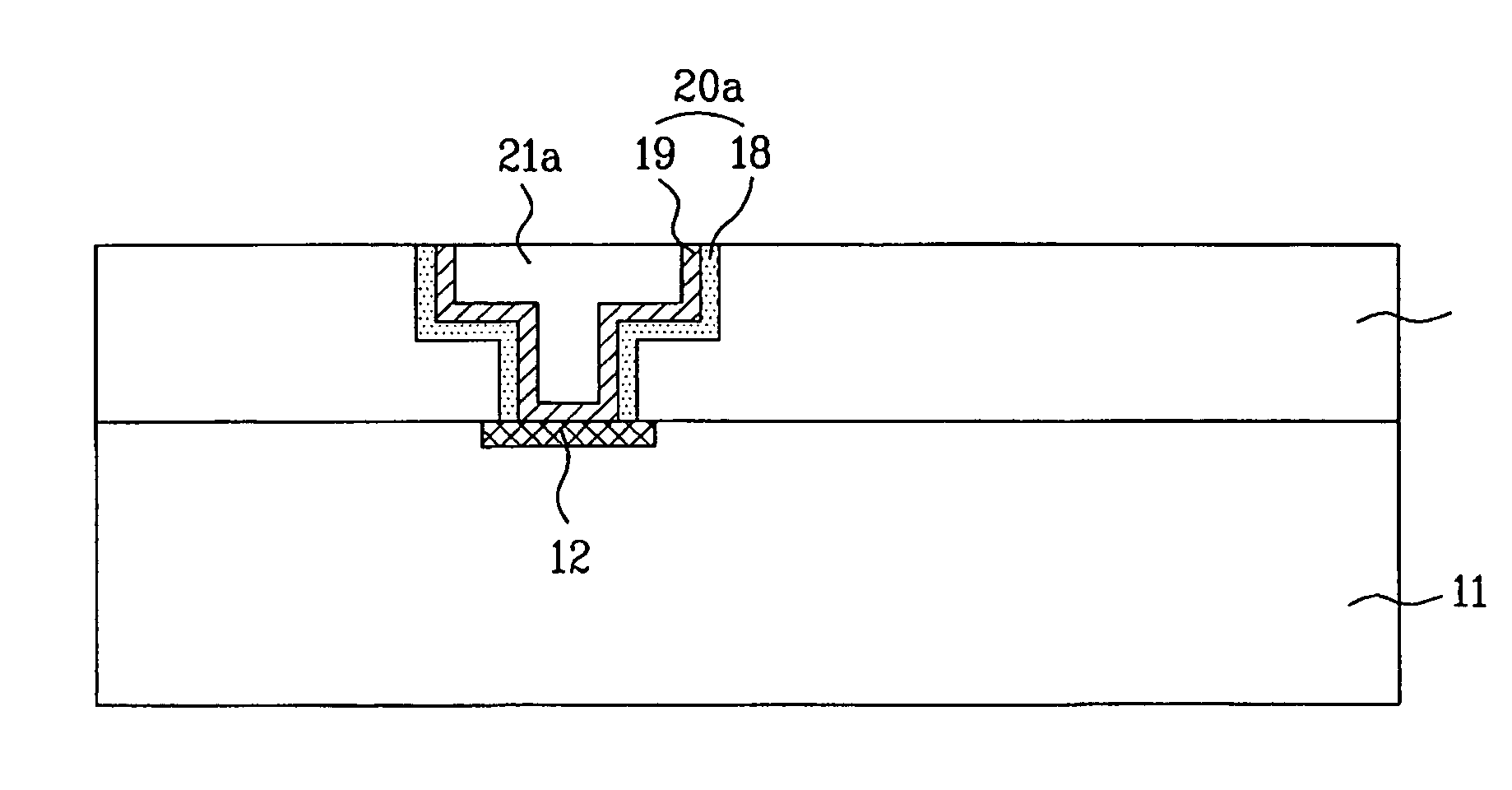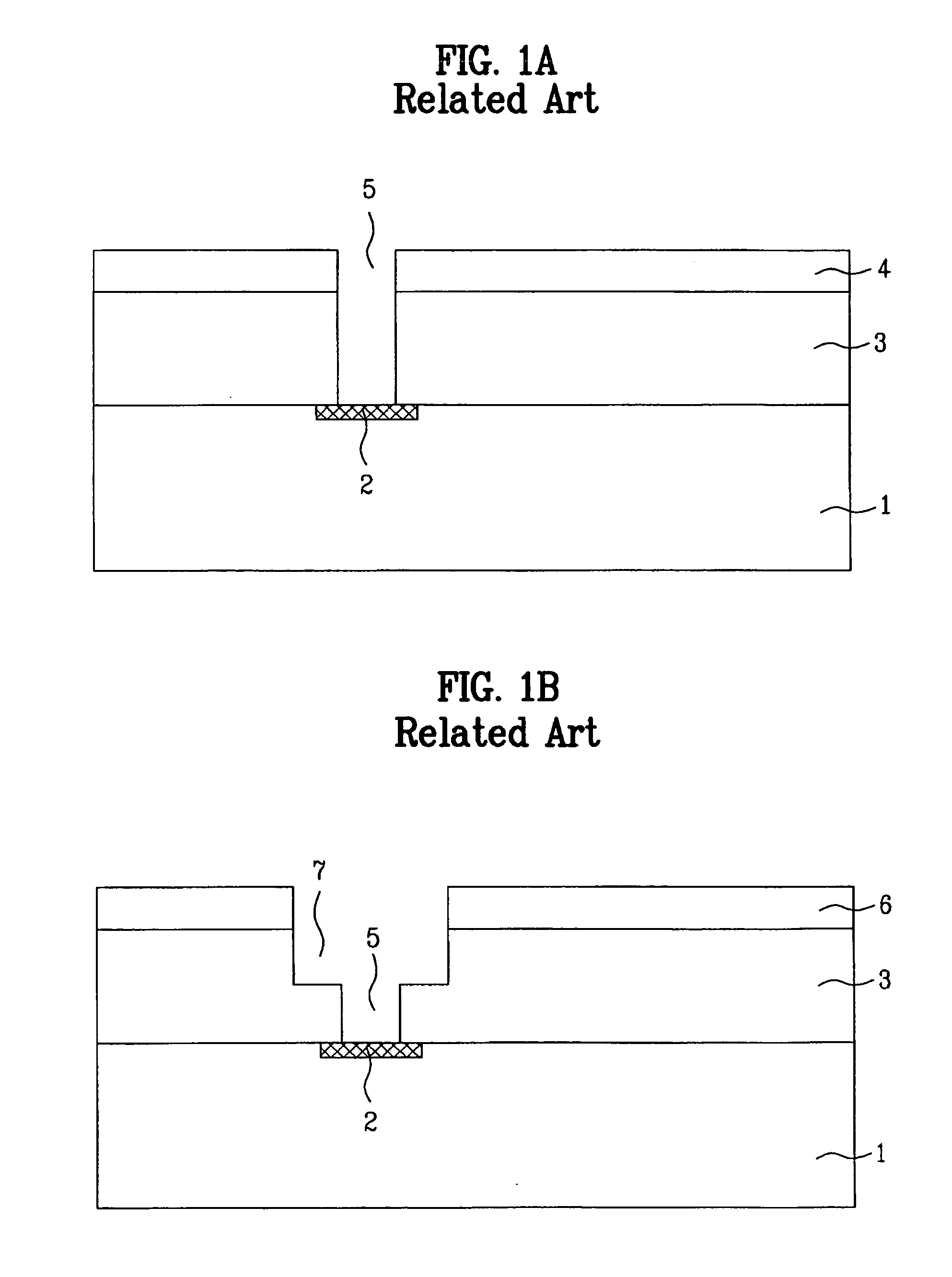Metal line for a semiconductor device and fabrication method thereof
- Summary
- Abstract
- Description
- Claims
- Application Information
AI Technical Summary
Benefits of technology
Problems solved by technology
Method used
Image
Examples
Embodiment Construction
[0052] Reference will now be made in detail to exemplary embodiments of the present invention, examples of which are illustrated in the accompanying drawings.
[0053]FIGS. 2A to 2D are sectional views of a semiconductor device fabricated with a process of forming a copper line in accordance with an exemplary embodiment of the present invention.
[0054] As shown in FIG. 2A, impurity ions are implanted in a semiconductor substrate 11 to form a semiconductor device 12.
[0055] Next, an insulating layer 13 such as a nitride oxide layer, an oxide layer, FSG, or BPSG is formed on the whole surface of the semiconductor substrate 11 including the semiconductor device 12.
[0056] A first photoresist 14 is coated on the insulating layer 13, and a contact area is then defined by patterning the first photoresist 14 by exposing or developing processes.
[0057] Next, a contact hole 15 is formed by selectively removing the insulating layer 13 using the patterned first photoresist 14 as a mask.
[0058] A...
PUM
 Login to View More
Login to View More Abstract
Description
Claims
Application Information
 Login to View More
Login to View More - R&D Engineer
- R&D Manager
- IP Professional
- Industry Leading Data Capabilities
- Powerful AI technology
- Patent DNA Extraction
Browse by: Latest US Patents, China's latest patents, Technical Efficacy Thesaurus, Application Domain, Technology Topic, Popular Technical Reports.
© 2024 PatSnap. All rights reserved.Legal|Privacy policy|Modern Slavery Act Transparency Statement|Sitemap|About US| Contact US: help@patsnap.com










